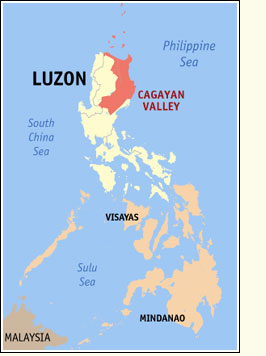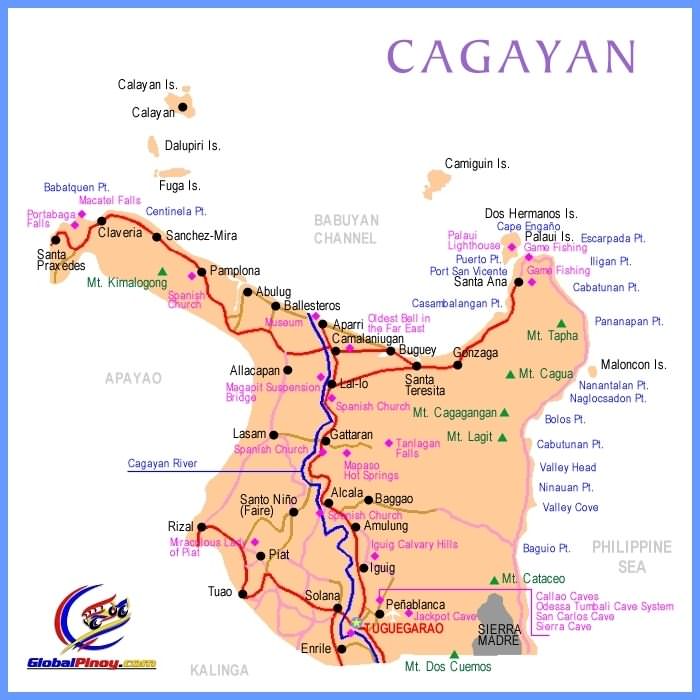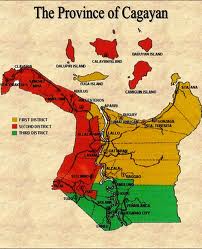
-
МјРЇСІИёСЖШИМі
-
 И№ОЫ КИОЫ Йъ ЗЛЦЎЧЯБт~ ИЎСЖЦЎ ПЙОрБюСі
И№ОЫ КИОЫ Йъ ЗЛЦЎЧЯБт~ ИЎСЖЦЎ ПЙОрБюСі 89,444
89,444 -
 [ЧЪИЎЧЩ ММКЮ] ФЋИ№ХзНК ПЉЧр 100Йш СёБтБт
[ЧЪИЎЧЩ ММКЮ] ФЋИ№ХзНК ПЉЧр 100Йш СёБтБт 48,862
48,862 -
 ИЖДвЖѓ НУГЛ - ИЎРп АјПјСЄКИ. (ЛчСј 16Рх ЦїЧд)
ИЖДвЖѓ НУГЛ - ИЎРп АјПјСЄКИ. (ЛчСј 16Рх ЦїЧд) 30,782
30,782 -
 ММКЮРЧ СіПЊСЄКИ15,526
ММКЮРЧ СіПЊСЄКИ15,526 -
 ИЖДвЖѓ БйБГ - ЕћАЁРЬЕћРЬ ПЉЧр СЄКИ14,332
ИЖДвЖѓ БйБГ - ЕћАЁРЬЕћРЬ ПЉЧр СЄКИ14,332 -
 [ЧЪИЎЧЩ ММКЮ/ИЗХК] ШЃХк МїЙк ПфБн Йз СЄКИ13,313
[ЧЪИЎЧЩ ММКЮ/ИЗХК] ШЃХк МїЙк ПфБн Йз СЄКИ13,313 -
 КИЖѓФЋРЬРЧ И№Еч И№НРРЛ КММі РжДТ ЛчСјУИ.13,122
КИЖѓФЋРЬРЧ И№Еч И№НРРЛ КММі РжДТ ЛчСјУИ.13,122 -
 ИЖДвЖѓ БйБГ - ЦХЛѓЧб ЦјЦї ПЉЧрСЄКИ12,824
ИЖДвЖѓ БйБГ - ЦХЛѓЧб ЦјЦї ПЉЧрСЄКИ12,824 -
 [ММКЮ-ЙшМБТјРх] МБЙкШИЛч РќШЙјШЃПЁПф~12,435
[ММКЮ-ЙшМБТјРх] МБЙкШИЛч РќШЙјШЃПЁПф~12,435 -
 ИЖДвЖѓ СіПЊ(ПЁИЃЙЬХИ -ИЛЖѓХз)РЧ СіЕЕ/ЧбБЙ РННФСЁ/МюЧЮИє12,105
ИЖДвЖѓ СіПЊ(ПЁИЃЙЬХИ -ИЛЖѓХз)РЧ СіЕЕ/ЧбБЙ РННФСЁ/МюЧЮИє12,105
Cagayan, Philippines Map

Cagayan (/kɑЫɡəˈjɑЫn/kah-gə-YAHN), (Ilokano:Probinsya ti Cagayan, (Tagalog: Lalawigan ng Cagayan), is a province of the Philippines in the Cagayan Valley region in Luzon. Its capital is Tuguegarao City and is located at the northeastern corner of the island of Luzon. Cagayan also includes the Babuyan Islands to the north. The province borders Ilocos Norte and Apayao to the west, and Kalinga and Isabela to the south. Cagayan province is distinct from the city in Mindanao named Cagayan de Oro, and is far away from Cagayancillo of Palawan or Cagayan de Tawi-Tawi Island in the Sulu Sea.
Present day chroniclers say that the name was derived from the word тtagay,т a kind of plant that grows abundantly in the northern part of the province. Thus, тCatagayanт which means a place where the tagay grows abundantly was shortened to тCagayan,т the present name of the province.
History
In 1581, Captain Juan Pablo Carreon came to Cagayan with one hundred fully equipped soldiers with their families by order of Gonzalo Ronquillo de Peñaloza, the fourth Spanish Governor-General of the Philippines, to explore the Cagayan Valley and to force the conversion of the natives to Catholicism as well as to establish ecclesiastical missions and towns throughout the valley. This was the first batch of Spanish settlers in the Cagayan Valley who introduced Spanish culture and Latin civilization, subverting native culture, customs, and tradition.
On June 29, 1583, Juan de Salcedo traced the northern coastline of Luzon and set foot on the Massi (Pamplona), Tular, and Aparri areas. The Spanish friars soon established mission posts in Camalaniugan and Lal-lo(Nueva Segovia), which became the seat of the Diocese established by Pope Clement VIII on August 14, 1595. The Spanish influence can still be seen in the massive churches and other buildings that the Spaniards built for the spiritual and social welfare of the people.
With the Treaty of Paris was signed in 1898, ending the Spanish-American War, America took over the Philippines and influenced the culture, most notably in agriculture and education as well as in public works and communications. At the close of the 18th century, there were 29 municipalities in the province of Cagayan. When the Philippines came under American sovereignty in 1902, 35 municipalities have been founded. Since then, however, on account of the tendency at centralization and shifting of population as a result of the opening of roads and public agricultural lands, only 29 municipalities now remain.
Beginning the Second World War, the air raid of the Japanese fighters and bomber planes was invaded, bombed and destroyed around the province of Cagayan and founded in 1942, the Japanese Imperial forces entered in Cagayan.
During the Second World War under the Japanese Occupation, over several pre-war infantry divisions and regular units of the Philippine Commonwealth Army was re-established from 1942 to 1946 at the general headquarters, camps and garrisoned here the province of Cagayan and begins the battles and invasions for the Anti-Japanese Operations in Cagayan Valley included to sending the province of Cagayan and Isabela and helping the local soldiers of the 11th and 14th Infantry Regiment of the USAFIP-NL, the local guerrilla fighters and the U.S. liberation forces was defeated and fought against the Japanese Imperial forces from 1942 to 1945.
The Battle of Cape Engaño on October 26, 1944, is held off Cape Engaño. At the time, when American carrier forces attacked the Japanese Northern Force to end and became the conclusion of the Battle of Leyte Gulf. The Japanese lost 4 carriers, 3 light cruisers and 9 destroyers.
In 1945, the combined United States and Philippine Commonwealth ground troops together with the recognized guerrillas took in Cagayan by the attack from the Japanese troops during the liberated in Cagayan province was under the Filipino soldiers of the 1st, 2nd, 11th, 12th, 13th, 15th and 16th Infantry Division of the Philippine Commonwealth Army, 1st Infantry Regiment of the Philippine Constabulary and the 11th and 14th Infantry Regiment of the United States Armed Forces in the Philippines – Northern Luzon or USAFIP-NL from the Battle of Cagayan Valley during the Second World War.
The Hotel Delfino siege is a bloody coup attempt happened on March 4, 1990, when suspended Cagayan governor Rodolfo Aguinaldo and his armed men of 200 seized Hotel Delfino in Tuguegarao, Brigader General Oscar Florendo, his driver and four members of the civilian staff, and several other people were held hostage for several hours. A gunfight was launched to kill Aguinaldo and his men but one of the suspended governor's men was found dead in a checkpoint shootout, Brig. Gen. Florendo and 12 others were also dead and 10 more wounded. Aguinaldo is also slightly wounded in a car gunfight until eventually escaped and hid into the mountains.

Geography
The province is bounded by the Pacific Ocean on the east; on the south by Isabela province; on the west by the Cordillera Mountains; and on the north by the Balintang Channel and the Babuyan Group of Islands. About two kilometers from the northeastern tip of the province is the island of Palaui; a few kilometers to the west is Fuga Island. The Babuyan Group of Islands, which includes Calayan, Dalupiri, Camiguin, and Babuyan Claro, is about 60 nautical miles (110 km) north of Luzon mainland.
The province comprises an aggregate land area of 9,002.70 square kilometers, which constitutes three percent of the total land area of the country, making it the second largest province in the region.
Cagayan has 28 municipalities and one city divided into three congressional districts. It has 820 barangays. Tuguegarao City (as of December 18, 1999) is the provincial capital, regional seat, and center of business, trade, and education. It has a land area of 144.80 square kilometers and a population of 120,645 as of 2000.
Economy
Agricultural products are rice, corn, peanut, beans, and fruits. Livestock products include cattle, hogs, carabaos, and poultry. Fishing various species of fish from the coastal towns is also undertaken. Woodcraft furniture made of hardwood, rattan, bamboo, and other indigenous materials are also available in the province. The Northern Cagayan International Airport is a planned airport in Lal-lo, Cagayan. The airport will be built to support the Cagayan Special Economic Zone in northern Cagayan, which also serves seaborne traffic through Port Irene. The airport project will involve the construction of a 2,200-meter runway, with a width of 45 meters, following the standards of the International Civil Aviation Organization. Once completed, the planned international airport can accommodate large aircraft such as the Airbus A319-100 and Boeing regional jets of comparable size.[1] SM City Aparri will soon be built once the towns of Aparri, Santa Ana and Lal-lo attained its cityhood.

Tourism
Duba Cave (Baggao) is a wet river cave and a swimming cave. Almost all passages with water, which is about 70% of the way to the Skylight Falls, have large breakdowns or walls without handholds along the side so the only way through is to swim. Because of this, it is highly recommended that personal floatation devices (PFDs) are used by all entering the cave. This will ensure a safe return trip especially after the long swims in.
Rio Grande de Cagayan (Cagayan River) — the Philippinesт mightiest watercourse — is the longest and widest river in the country. Small streams originating form Balete Pass, Cordillera, Caraballo and the Sierra Madre Mountains meet other streams. It passes from Aparri traversing Isabela as far as Aurora Province.
Claveria Coast is called the "Coastal Paradise of the Cagayan North."
Callao Cave (Penablanca) has seven chambers. It is one of the best known tourist attractions of the province. It is in Barangays Parabba and Quibal, Peñablanca, near Tuguegarao, the capital city of the Province of Cagayan. Callao Cave has a natural cathedral at the first chamber, which was turned into a chapel by the local people. The conditions inside the cave cause stalactites and stalagmites, particularly in the deeper chambers. Every chamber has natural crevices, which let light get in, serving as illumination for the otherwise dark areas.
Magapit Bridge (Lal-lo) is known as "the Golden Gate of Cagayan." It is Asia's first suspension bridge, built in 1978. It spans the Cagayan River at Lallo and is 0.76 kilometers long. The hanging bridge links the first and second districts of Cagayan going towards the Ilocos Region by the scenic Patapat Road.
Calvary Hills (Iguig) consist of 11 hectares of rolling hills. It features larger-than-life concrete statues in tableau settings of the 14 Stations of the Cross, depicting Jesus Christтs suffering and death on Mount Calvary.
Basilica Minore Nuestra Señora de Piat (Piat) ("Primary Pilgrimage Center of the North"): The patroness of Cagayan Valley housed at the Basilica Minore of Our Lady of Piat has become the religious fulcrum of people wanting for favors of any kind. Visitors may view her history at the Basilica Museum which has an extensive collection of religious items and Our Ladyтs vestments and accessories.
Bukal ng Buhay (Piat) ("Spring of Life") is said to be a miraculous water that can heal diseases of any kind. It is below the hill where the Basilica of Our Lady of Piat stood.
Sta. Ana Beaches — from pristine blue waters and fine sand, to rolling hills and enchanting colonial structures, to mystical caves and endearing people — are dubbed as тUntouched Paradiseт, тGateway to the Pacificт, тGame Fishing Meccaт, тLuzonтs Last Frontierт and тMarine Sanctuaryт.
Kalesa (horse-drawn carrier): In Cagayan, kalesas are common, especially in Tuao and many other municipalities. In Tuguegarao City, they are mixed in traffic with private cars, motorcycles, sidecar motorcycles, jeepneys, trucks, and bicycles.
Calayan Island (Calayan): The island town is a two-hour boat ride from Aparri. It is rich in natural attractions like excellent beaches, archeological sites, endemic flora and fauna, virgin forest, crystal clear blue waters, plus hospitable and gentle people with colorful history.
Ar-Aro Cave (Gattaran): Nobody from among the old-timers of Barangay Naddungan, with a population of not more than 800, remembers how this cave got its name. Only a few locals, particularly fishermen, know the place. It was discovered by some of their old folks as a fishing ground for eels and araro, a freshwater fish.
Kalamudinan Falls (Baggao) is 26 kilometers from the center of Santa Margarita, Baggao, Cagayan. More than 100 meters high and rich in shrimp (locally called udang) and fishes.
The Malaueg Church (Rizal) is at the Poblacion of the town. The church was preserved completely by UNESCO and underwent restorations. The church is made entirely of stones that was designed originally by Spaniards.
Since Cagayan faces the Pacific Ocean an extensive shoreline sprawls along the coastal towns of Sanchez Mira, Sta. Praxedes, Claveria, Buguey, Buguey, Aparri, Ballesteros, Abulug, and the islands of Palaui, Fuga, and island municipality of Calayan. Sanchez Mira, Claveria, and Sta. Praxedes have facilities for excursion stays while Fuga Island is being developed as a world-class recreation and tourism center. Whale watching at the Calayan Islands are the most sought-after and scuba diving, snorkeling and fishing are the most famous in Palaui Island in Sta. Ana. The airstrip at Claveria could be used as a jump-off point to Fuga Island.
There are a lot of recreation and things to do in Cagayan for tourists and locals alike with its famous Sambali Festival celebrated throughout and in commemoration of its founding. Activities in the province are unlimited with its green surroundings, floras and faunas, caves and historical churches. There are many nice places to stay such as the Governors Garden Hotel, Hotel Candice, Hotel Roma and Hotel Kimikarlai all in Tuguegarao City.
Claveria is blessed with a wealth of scenic attractions which include the following: the Lakay-Lakay Lagoon, the rocky formation along the Camalaggaon Caves, the Roadside Park overlooking the Claveria Bay, Macatel Falls with its crystal waters that run in abundance throughout the year, the Pata Lighthouse that offers a breathtaking experience, and the Claveria Beach Resort along the serene white sand coasts.[2]
- ЁЄ
- ЁЄ
- ЁЄ
- ЁЄryWvMVxeet
- ЁЄryWvMVxeet
- ЁЄryWvMVxeet\'\"\\(
- ЁЄryWvMVxeetщ\'\"\\(
- ЁЄryWvMVxeet
- ЁЄryWvMVxeet
- ЁЄryWvMVxeet
- ЁЄryWvMVxeet
- ЁЄryWvMVxeet
- ЁЄryWvMVxeet
- ЁЄryWvMVxeet
- ЁЄryWvMVxeet














 ЧЪРкДхФФ ОпАЃЛѓДу ПРЧТ
ЧЪРкДхФФ ОпАЃЛѓДу ПРЧТ 12ГтПЌМг МвКёРкИИСЗ 1РЇ
12ГтПЌМг МвКёРкИИСЗ 1РЇ
 ГЛАд ИТДТ ОюЧаПј УЃБт
ГЛАд ИТДТ ОюЧаПј УЃБт
 ИЎОѓ ЧаБГ ЙцЙЎБт
ИЎОѓ ЧаБГ ЙцЙЎБт
 СжИЛПЁ ГЛАЁ ОЕ КёПыРК?
СжИЛПЁ ГЛАЁ ОЕ КёПыРК? УжАэАЁМККё РЬКЅЦЎ СёБтБт
УжАэАЁМККё РЬКЅЦЎ СёБтБт
 ЧіСіПЁМЕЕ ЧЪРкДхФФ!
ЧіСіПЁМЕЕ ЧЪРкДхФФ! ЧіСіПЁМ АЁДЩЧб
ЧіСіПЁМ АЁДЩЧб









 ЧЪРк ЦЏБо Ч§ХУ! ФСНУОюСі МКёНК
ЧЪРк ЦЏБо Ч§ХУ! ФСНУОюСі МКёНК
































